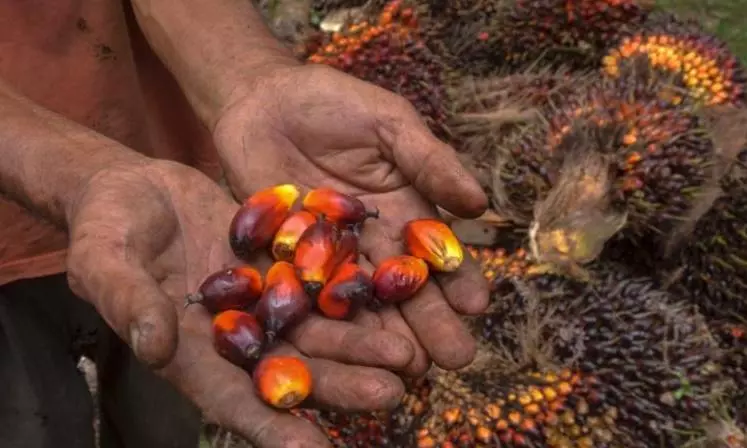Telangana: Plan for Oil Palm in Forest Podu Land Gets Fresh Push

Hyderabad: A renewed push to encourage oil palm plantations in Podu patta lands in the forests — for which the state forest department has “requested” its district officials to “without fail” permit farmers for taking up various types of crops, drill bore wells and ensure electricity supply to operate them — is set to threaten the natural forest ecosystems. This could also result in severe depletion of groundwater reserves in the forests.
There has been no scientific study by any department or wing of the state government on the ecological and environmental impacts of growing oil palm trees inside forests.
Despite this, the forest department has, in a letter to its district officers in the second week of May, asked its officials to follow the instructions to allow raising any crops, including oil palm, issued in September 2022 by A. Santhi Kumari, then special chief secretary of forests and currently Chief Secretary.
As part of the September 2022 instructions, the forest department was apprised that the government was making a huge push for increasing oil palm cultivation, and that the patta holders could raise crop of their choice.
Responding to questions on the 2022 instructions given by her and allowing oil palm cultivation in Podu land, Santhi Kumari said that the amendments in 2019 issued by the Union forests ministry had clarified that Podu patta holders were “free to raise any crop for their sustenance, agriculture or horticulture or commercial in nature, including rubber teak plantations.”
Though oil palm was not mentioned specifically by the Centre, the reasoning provided was that since the plant fell under the commercial crop category, its raising can be allowed in Podu land.
Asked if any study or scientific assessment was taken up in Telangana on the impacts of introducing non-local or alien species of plants such as oil palm inside forests, Santhi Kumari’s response was restricted to saying “plantation crops like coffee, eucalyptus, rubber, mulberry and oil palm have been common in agency areas for many decades. There are many success stories on such plantations.”
Even more damaging for the forests could be the irrigation demand for each oil palm plant.
On an average, each oil palm plant requires 65,150 litres of water in a year, according to Indian Institute of Oil Palm Research (IIOPR) of the Indian Council for Agricultural Research (ICAR). This works out to 178.5 litres of water a day on average throughout the year for a single plant, or 10,174.5 litres of water if 57 oil palm trees are planted in one acre as per IIOPR recommendations.
“This is the reason why permissions are being asked for drilling of bore wells and energizing them inside forest areas on Podu patta lands,” an officer explained.
Water sources and resources, are hard to come by in forests as can be gauged from the fact that the state forest department operates and maintains around 6,200 artificial water holes for wildlife, and spends substantial amounts to carry water and fill such water holes across the forests in the state every summer.
Ecological benefits of oil palm in forests: As per 2022 instructions of the state government, oil palm plantations contribute to afforestation, promote effective green cover, help absorption of carbon dioxide from the atmosphere and increase organic carbon content in the soil.
What do oil palm plants need? On an average 178.5 litres of water a day amounting to 10,174 litres per acre per day if 57 plants are in each acre as per IIOPR recommendations;
Application of fertilizers every month including Urea, Di-Ammonium Phosphate, Muriate of Potash;
If pests - bagworm, leaf webworm, slug caterpillar – are seen, then Lambda Cyhalothrin pesticide has to be used. If pests such as Rhinoceros Beetle are found, then naphthalene balls are to be used, to avoid bud rot Chlorothalonil to be used. In addition, weedicides Glufosinate Ammonium/Paraquat also need to be applied to the plants.

